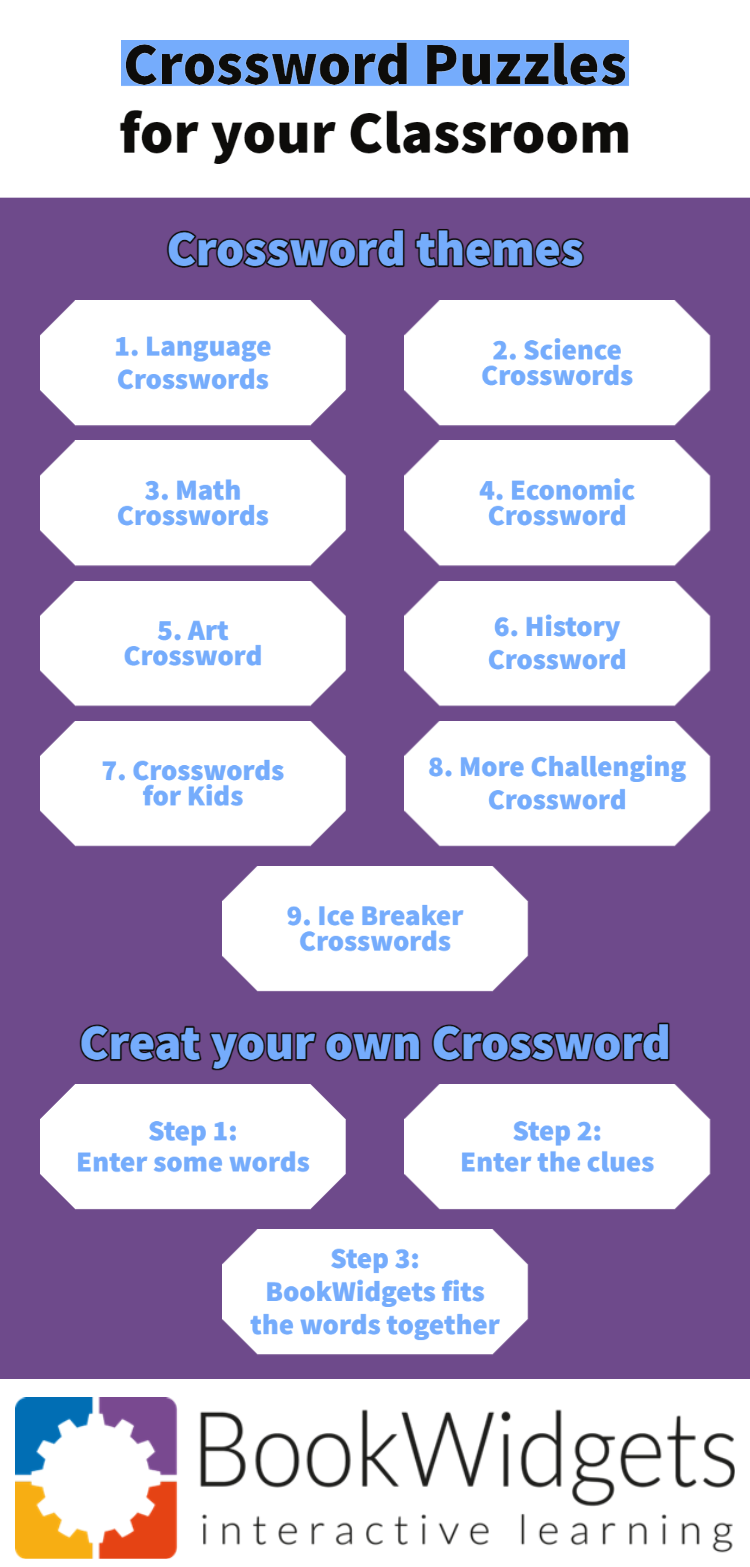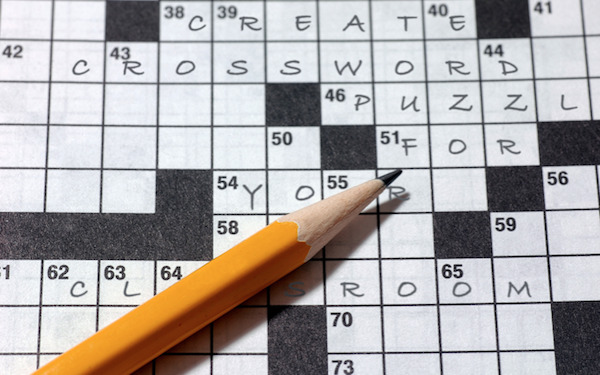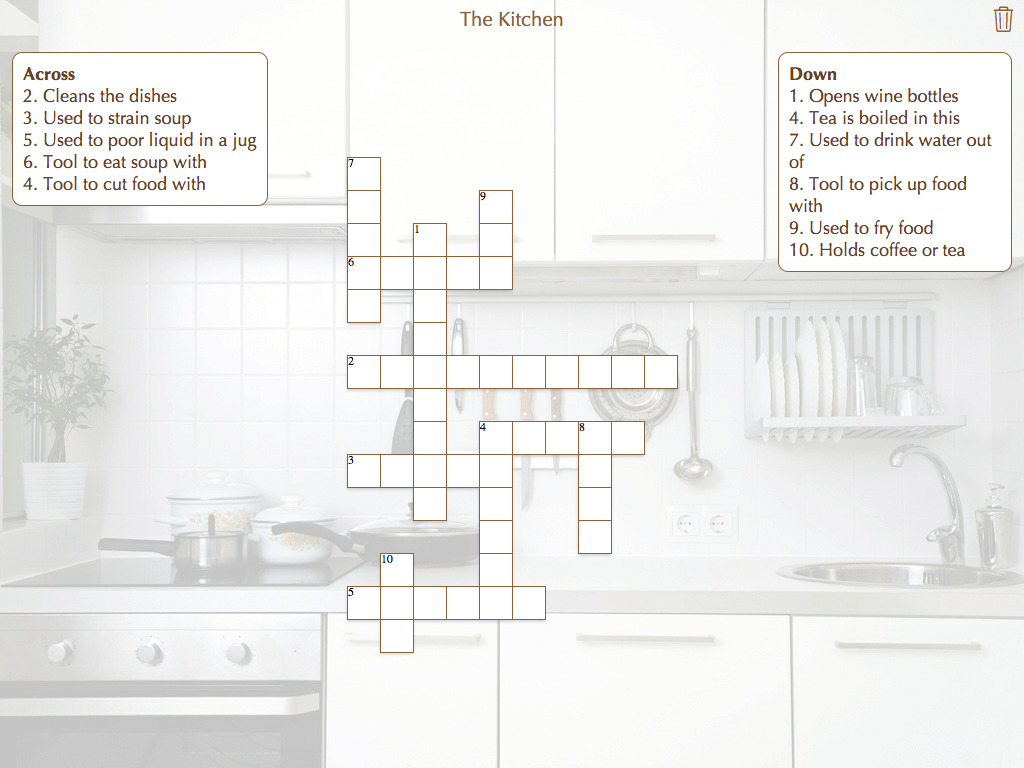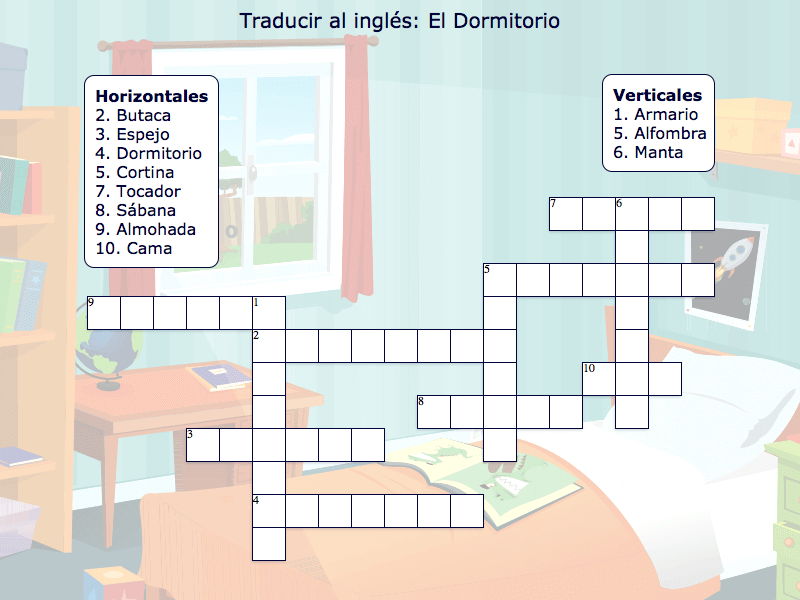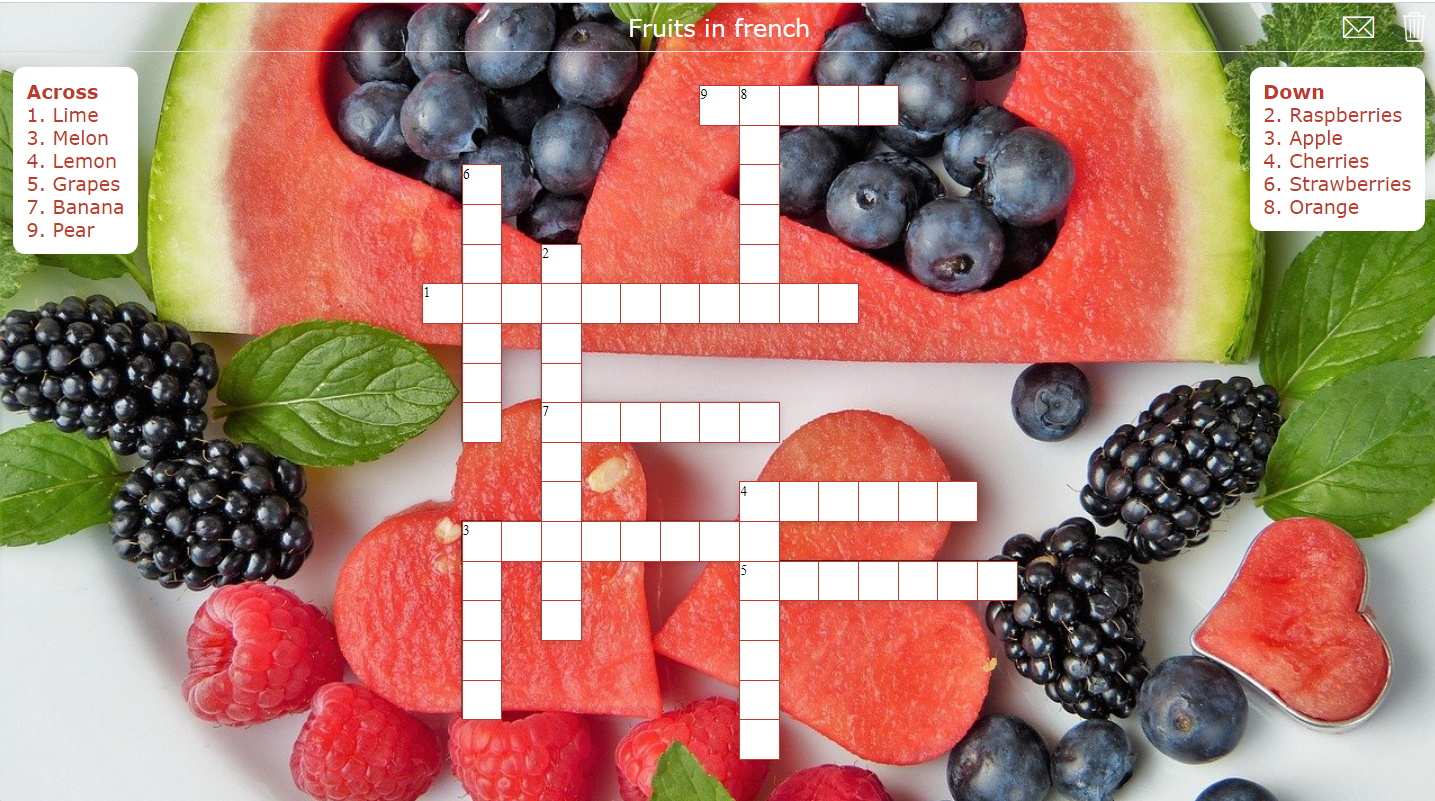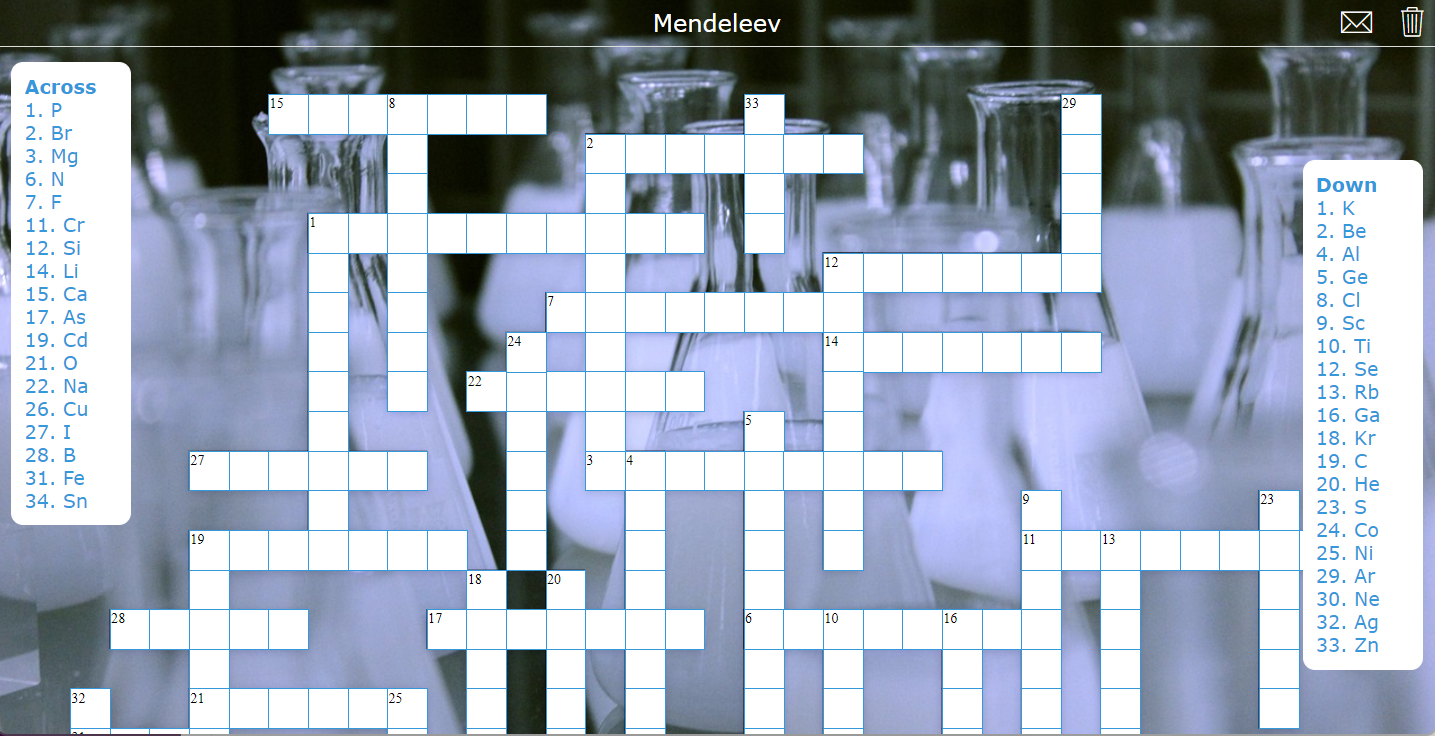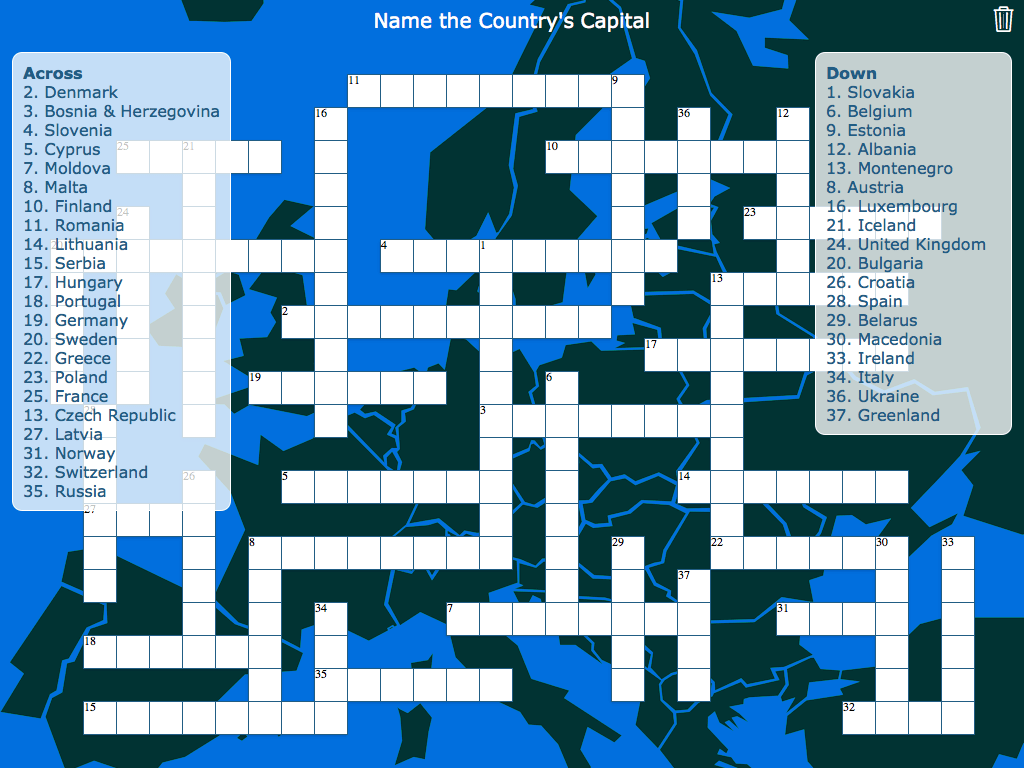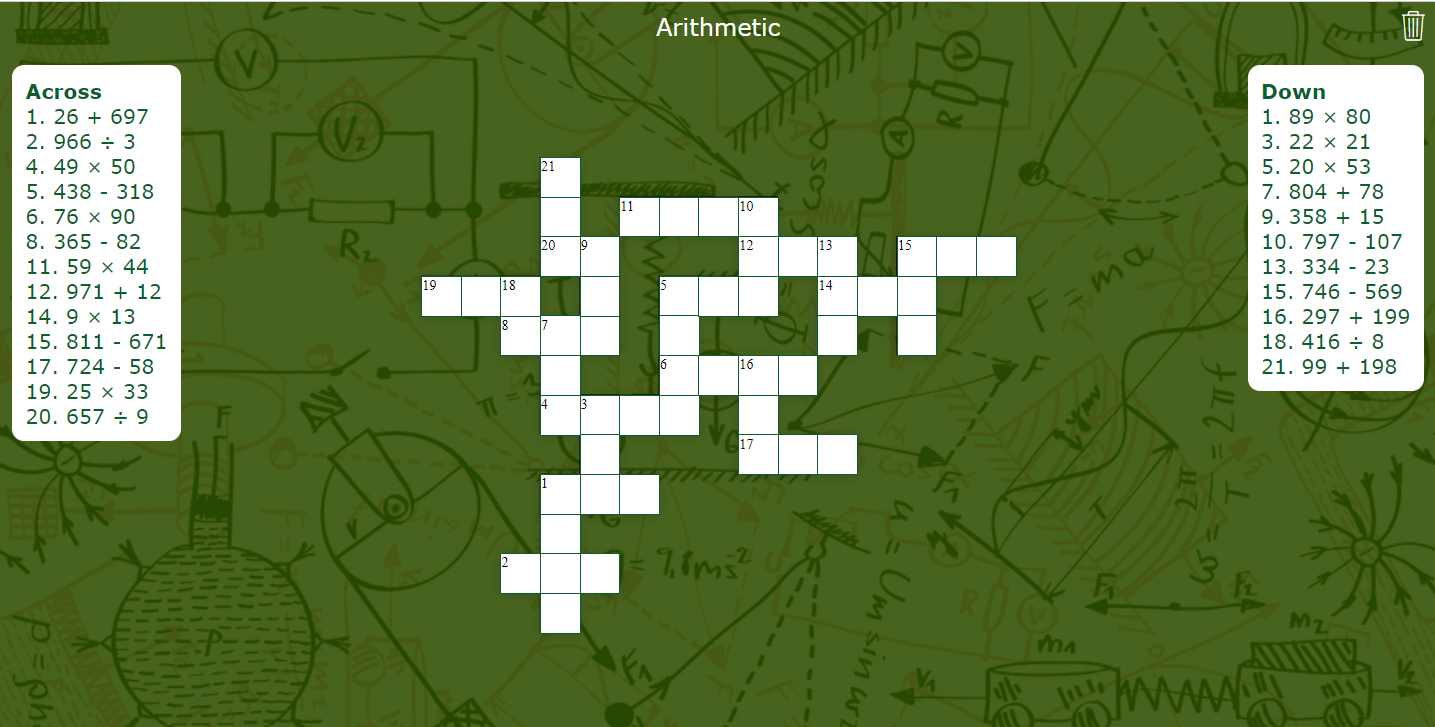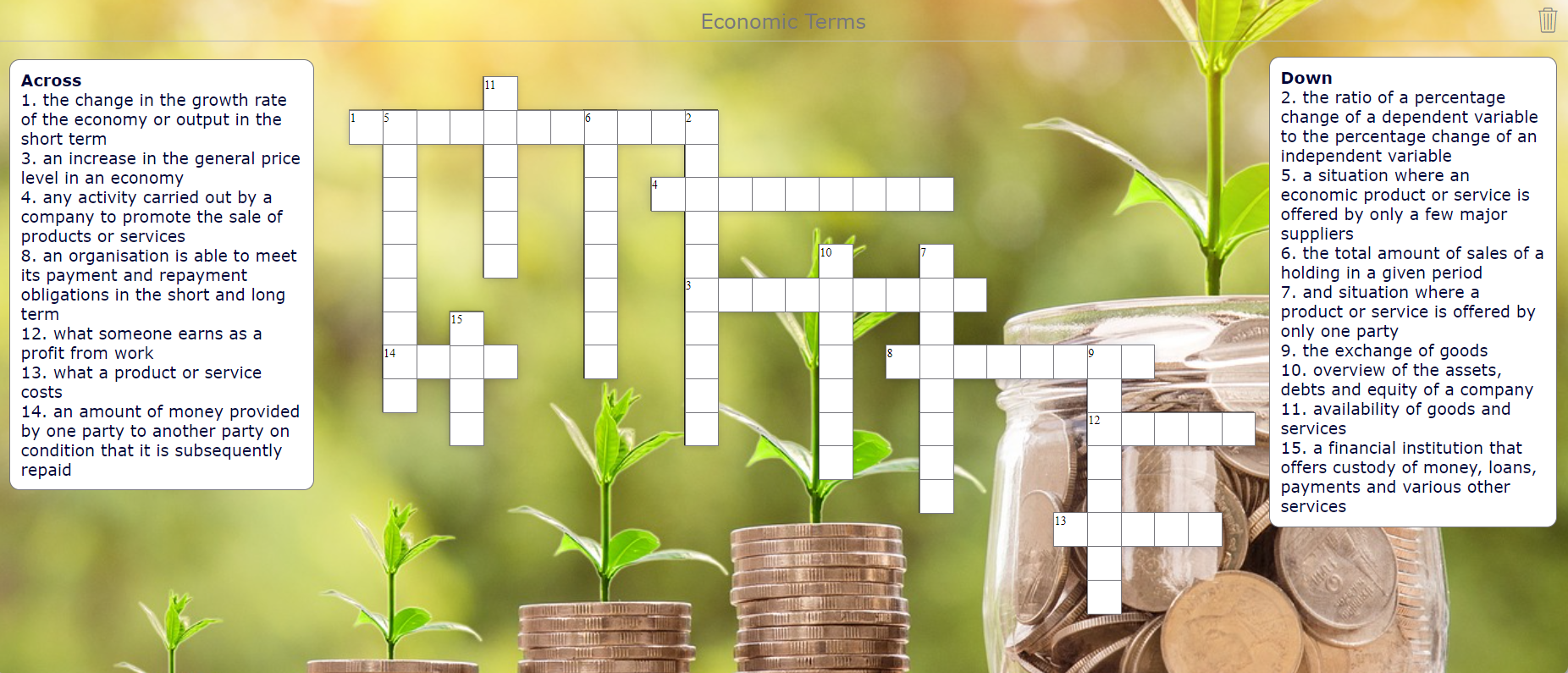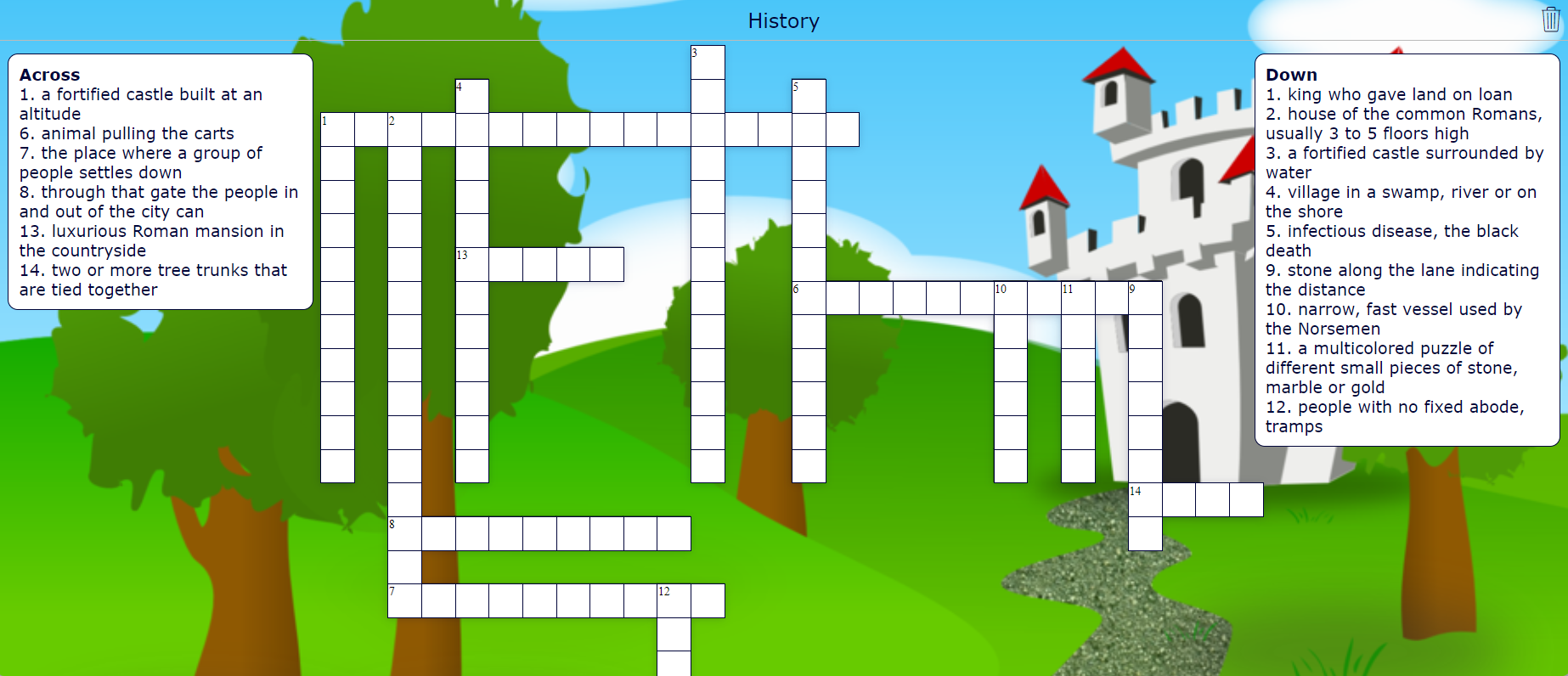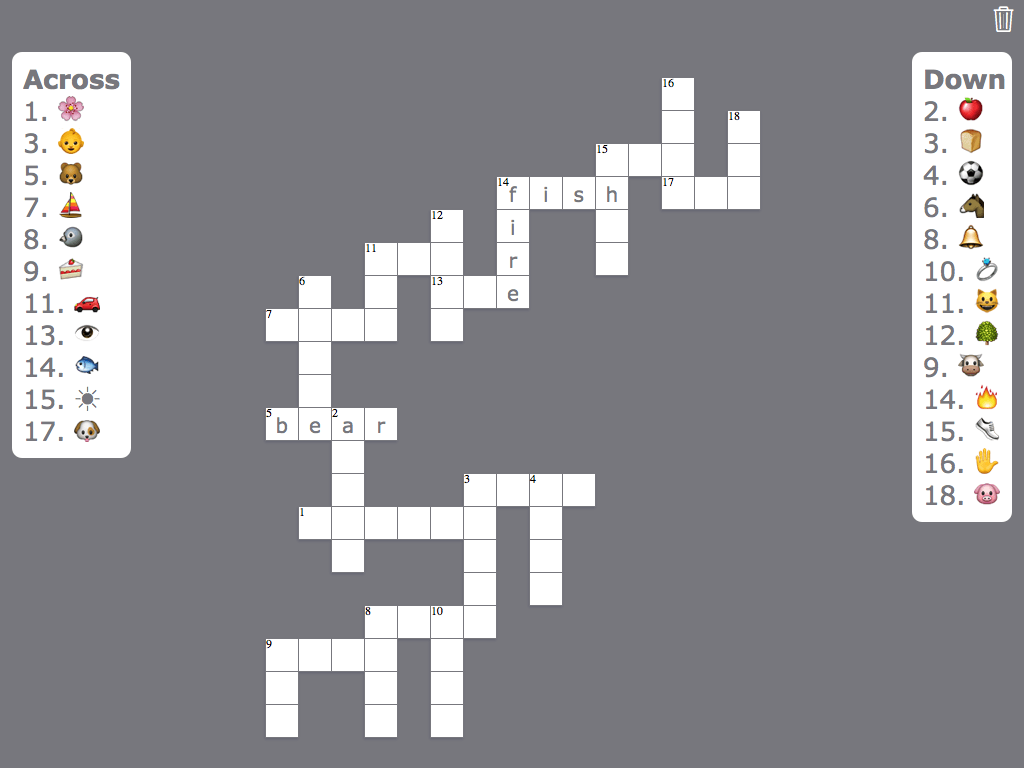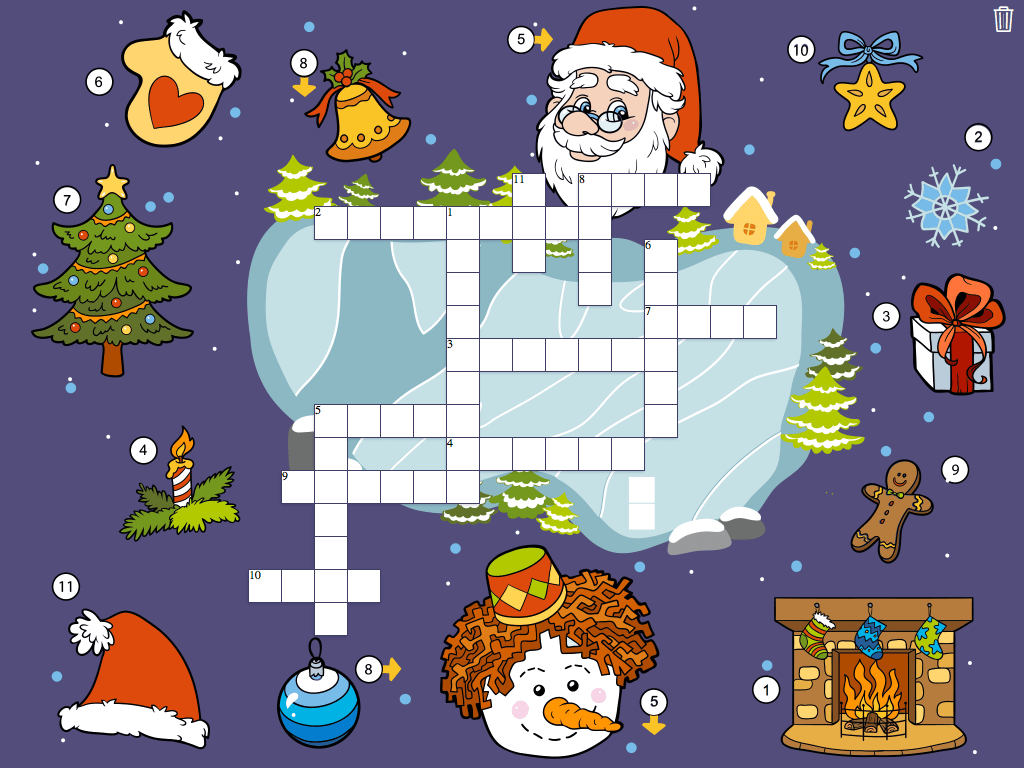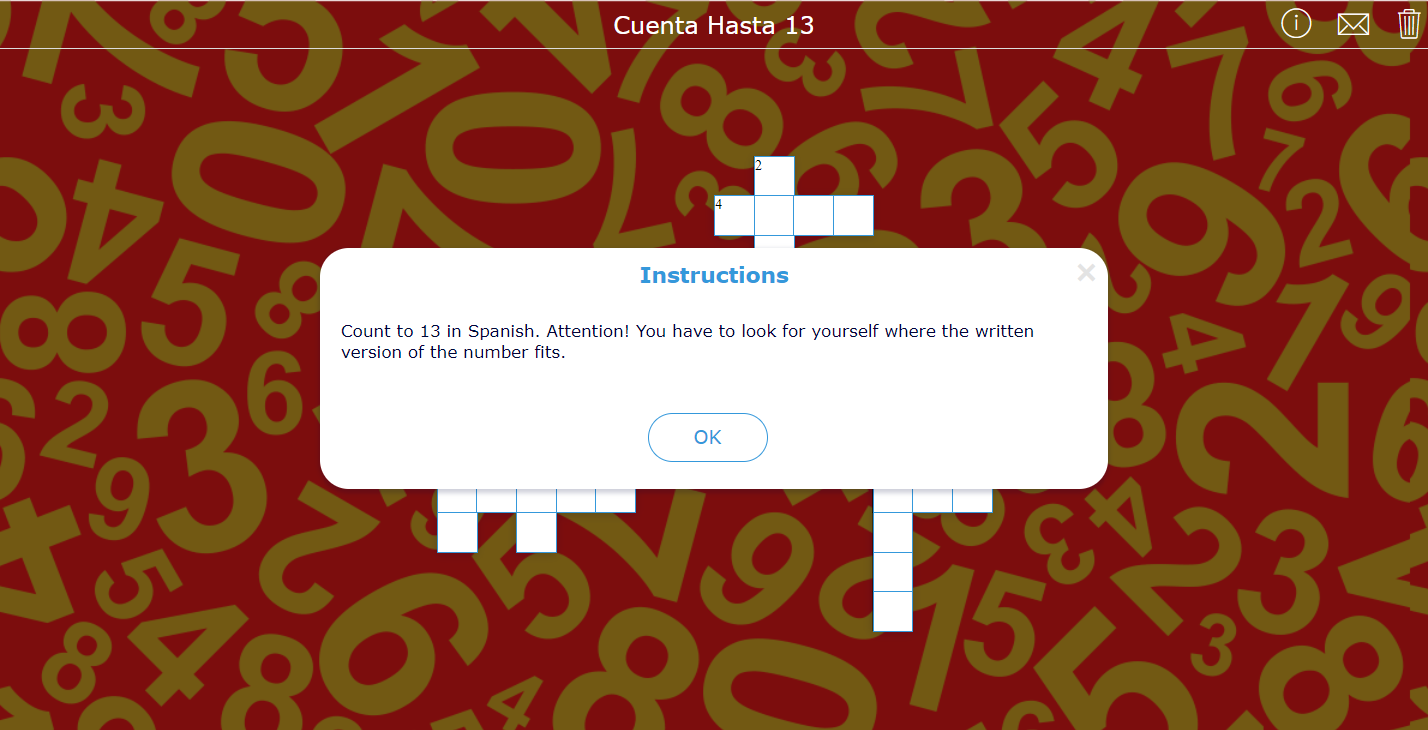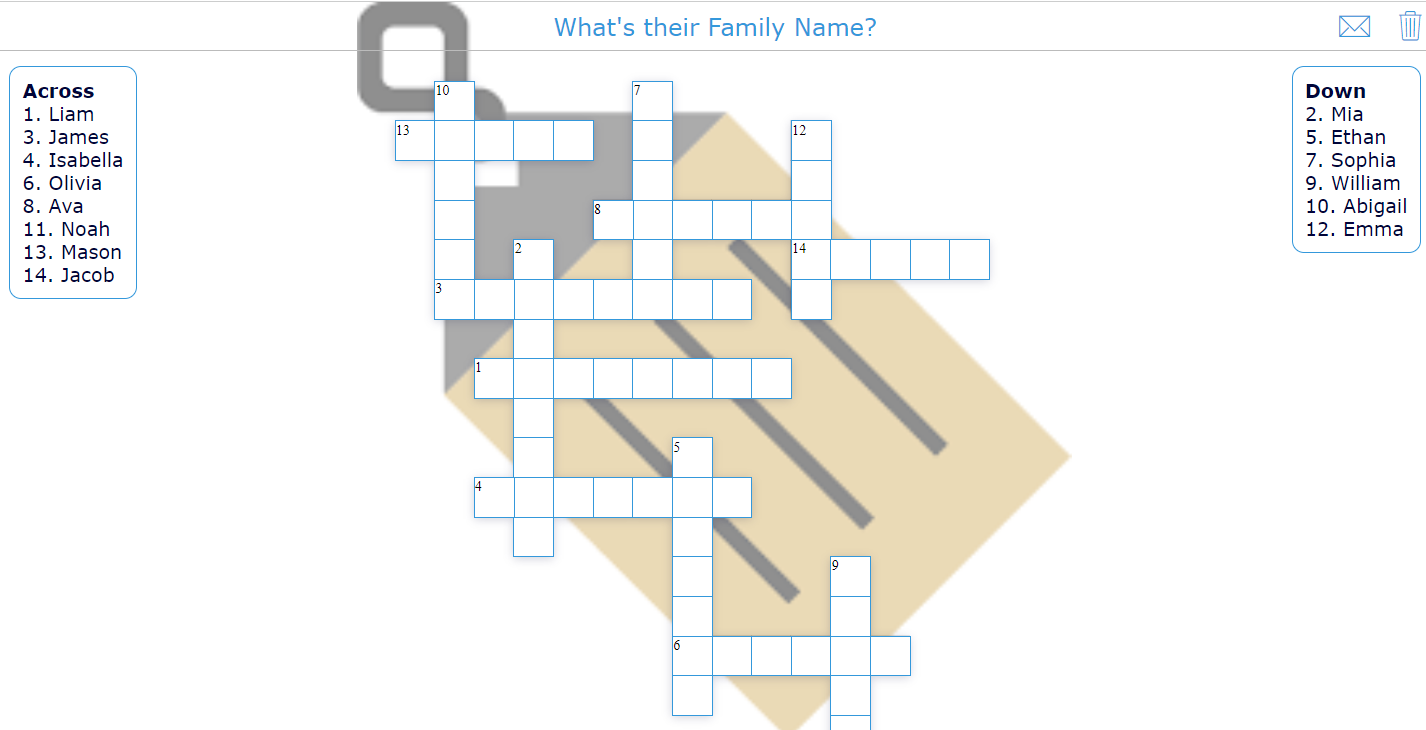10+ incredible Crossword Puzzles examples for teachers to use in class
 Remko Tronçon —
Remko Tronçon —
3 down: “Fun word puzzle”, 9 letters, starts with “c”, ends with “d”? Correct: Crossword puzzles are a great way to introduce teaching subjects, learn vocabulary, practice spelling words, and even flex your students’ logical reasoning muscles.
Whether you teach languages, sciences, math, or any other subject, using crosswords in your class is always entertaining. In this post, we’ll dive into some examples of crosswords you can use in the classroom, and we’ll show you how you can create your own crosswords for iPads, Chromebooks, PCs, or any other devices.
Crossword themes:
- Language Crosswords
- Science Crosswords
- Math Crosswords
- Economics Crossword
- Art Crossword
- History Crossword
- Crosswords for Kids
- More Challenging Crosswords
- Ice Breaker Crosswords
💡 Good to know: all the ready-to-use crossword activities are created with BookWidgets. You can easily duplicate an activity for free, edit it if needed, and share it with your students. You can do so in the examples separately, or you can find all the crossword examples in the BookWidgets Blog group folder.
Language Crosswords
Language classes are probably the most obvious place where crosswords can be useful and fun. By finding words based on clues, students can playfully learn new vocabulary in their native language or a foreign language. What’s more, by fitting the letters on the board, they also focus on the exact spelling of the words.
With a classical crossword, you can give clues about words around a given topic in a certain language. For example, when teaching about the kitchen in English class, you could create a crossword like this one:
When teaching foreign languages, you could do the same and describe the foreign words in the foreign language itself. Or, you can create a crossword that translates between languages, by providing the clues in a different language than the words:
Using crosswords in your language classroom is almost too easy: pick any set of words around the subject you’re teaching, translate them or invent clues for them, use a tool to put them in a crossword, and you’re done!
You can also use a crossword to practice grammar. Here’s an example:
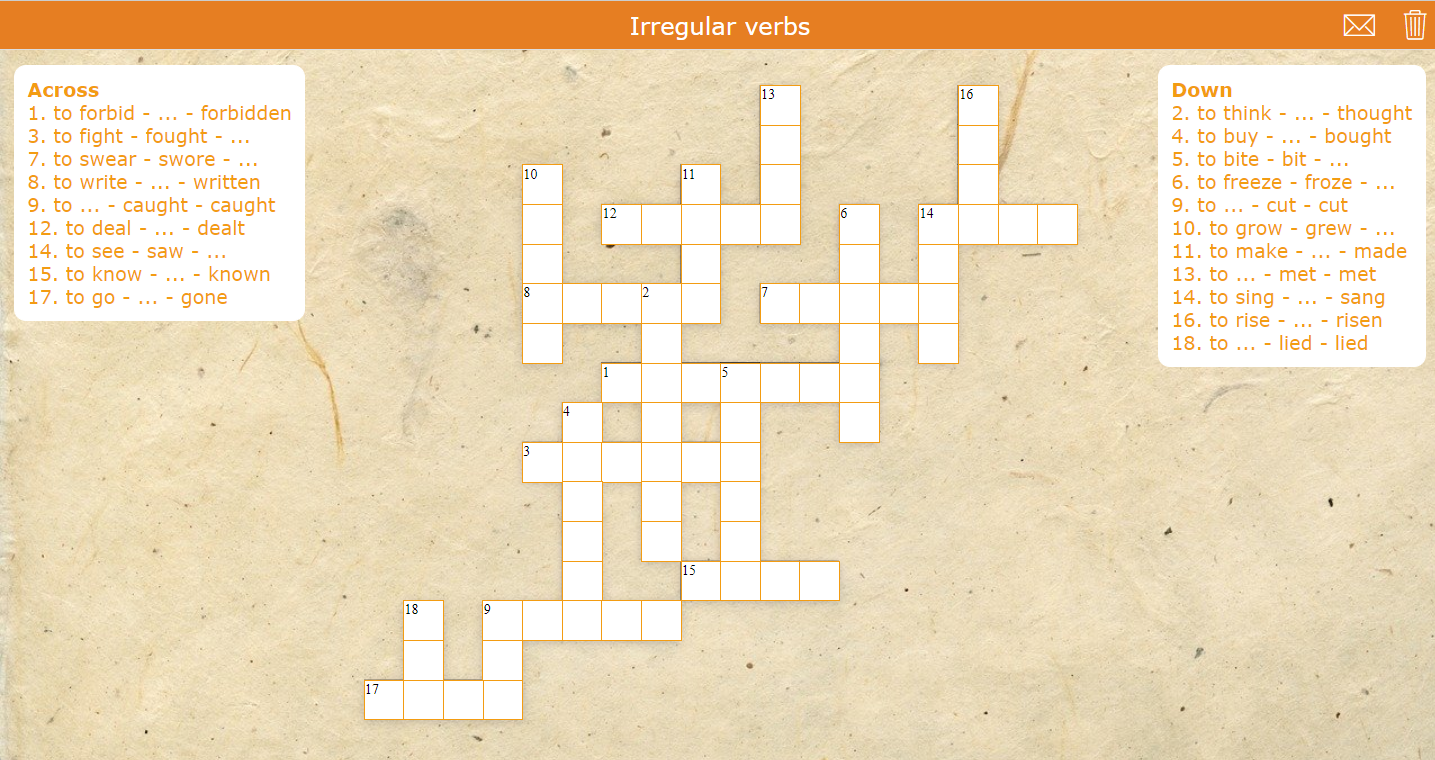
Science Crosswords
If language teachers can create crosswords to teach vocabulary, science teachers can use crosswords as well to teach terminology. Biology, physics, chemistry, …, they all have their own terms to memorize, and so they are all great candidates for using crosswords as an introduction or exercise material.
Chemistry, for example, is notorious for having a lot of stuff to commit to memory. One of the basics you have to learn is the elements of the periodic table. Why not put the symbols and their names in a crossword?
Geography also has its fair share of names to remember: countries, cities, continents, mountain regions, rivers, … Can you guess what I’m about to suggest? That’s right: “Why not create a crossword for it?!” For example, if your students need to learn about capital cities, make them guess it in a crossword:
The list of suggestions for science crosswords is endless. I could go on and on, but I think I’ll end it here. Well, okay, just one more science topic for the road …
Math Crosswords
Like science, math also has specific terminology for which you can create crosswords. However, by playing with numbers, you can do some more out-of-the-ordinary crosswords as well. For example, you could create a list of arithmetic problems of a certain level, and let your students fill in the solution:
This puts your students’ brain cells at work and gives a fun twist to simply writing down solutions to a long list of arithmetic problems. If arithmetic problems still sound too dull, you can make them more interesting by creating math problems (such as 12kg of apples cost €24. How much does 20kg of apples cost?) as clues of the crossword.
Economic Crossword
Economics classes very often include new concepts. Students must know these in order to understand the subject matter properly. Perhaps it is an idea to practice this “playful”? Here is an example.
Art Crossword
Art is a subject that you can integrate into different ways. For example, in high school, it can fall under the subject of aesthetics while in elementary school, it can be involved in craft classes. In this crossword puzzle, you will find all the famous artists.
History Crossword
People used to live in a very different way. Did you just apply something new to your students? Then a crossword puzzle is a perfect process to see if students have mastered the material.
Crosswords for Kids
A crossword usually has sentences or other words as descriptions of words to fill in. Unfortunately, this makes crosswords challenging to play for our youngest students, who are only learning to read and write their first words. And yet, crosswords would be an excellent way for them to learn basic spelling.
If only there was some way to graphically describe simple words … 🤔
Hang on, there is: Emoji! 🙌🚀🎉 Many simple words (such as the ones from the Dolch word list) have an emoji symbol. By using emojis as clues, you can quickly create a crossword that is easy enough to play for the smaller ones:
If you’re a real artistic talent and are willing to put in some extra time and effort, you can even draw your own clues:
More Challenging Crossword
So far, the crosswords we’ve shown are relatively easy if you know your material. Each clue typically maps only to a few possibilities, and especially if you already have a few letters, the answer is pretty obvious. However, you can spice things up by making the clues ambiguous, such that there are many possibilities. The only way to know what to fill in is to either know a few letters or to apply logical reasoning skills to eliminate possibilities.
For example, suppose you’re teaching counting in Spanish. Instead of giving the English numbers as clues, you could simply not give any clues at all:
In the above example, 12 down could be either uno or dos, which would make 11 either ocho or seis; you need to continue trying in order to eliminate the possibilities. However, a smart student would figure out that they’re better off starting with the only 6-letter word, cuatro, and continue from there. These puzzles keep them excited by making their logical deduction skills work, and they’re learning their numbers while playing Sherlock Holmes! 🕵️
Ice Breaker Crosswords
We have talked about using icebreakers in the classroom to make students acquainted with each other on the first day of school. Besides games such as Bingo or Hangman, crosswords also be a fun way for students to get to know each other’s names. You could use descriptions of the student as clues, and let them fill in the first names; or, you could list the first names, and leave the last names to be fitted in the crossword:
You can find lots of crossword-friendly variations on the ice-breaker theme to take the edge off that first day.
3 Handy features of digital Crossword Puzzles
1. Live monitoring
When your students are completing your crossword puzzle, you can observe them on your screen. This is possible in BookWidgets using the “Live widgets” feature and only works if you’re sharing your crossword within a connected learning management system such as Google Classroom, Microsoft Teams, and more. You can see how many words your students have found and where they are making mistakes. You can also see struggling students and distinguish your pop tarts! Use these insights to reach out a helping hand or provide more challenging crosswords or other BookWidgets exercises.
2. Print your crossword puzzle
Creating crossword puzzles with the BookWidgets crossword puzzle maker is easy and quick. But sometimes your students don’t have a device at their disposal. You can also “Print” the crossword puzzle you created with BookWidgets. Just go to “preview” and hit the “print” button.
3. Auto-grading
As a teacher, you’ve already indicated the correct answers when you configured your digital crossword puzzle. This triggers the power of auto-correction. When students solve the crossword puzzle correctly, everything will turn green. If some words are wrong, they will turn red. Students can even submit the crossword puzzle to you, so you can add comments and give feedback. Now you can also return the feedback and correction to your students.
Creating your own Crossword Puzzles
By now, you may be thinking “This all sounds great, Remko, but I want to create my own crossword for my own lessons. How do I go about that?” Well, BookWidgets has you covered and makes it very quick and simple to create your own crosswords. All you have to do is enter some words and their clues, and BookWidgets takes care of fitting the words together into a nice-looking interactive crossword. You can instantly send it to your students’ devices or within your connected learning management system.
Wrap up
Ready to give it a shot? Just hit the button below, sign up, and start creating crosswords (and many other widget types with a free BookWidgets trial.
